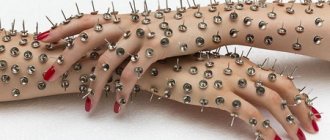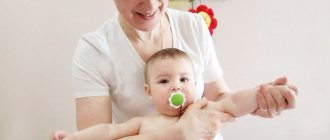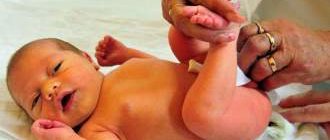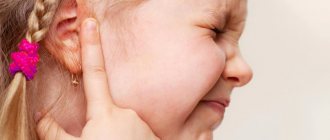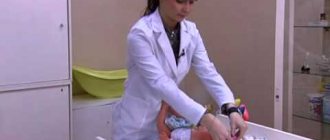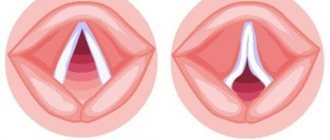Pediatrician, physiotherapist, head of the pediatric medical department
Neonatal jaundice is a change in the color of the skin, conjunctiva and sclera (whites of the eyes) in newborns to a yellowish tint due to increased levels of bilirubin (a pigment that is formed when hemoglobin breaks down) in the blood plasma during the newborn period. Neonatal jaundice is usually mild and transient. However, it is important to monitor newborns with severe jaundice or whose jaundice does not resolve naturally, as this may lead to long-term negative consequences. Severe neonatal hyperbilirubinemia is associated with a neurological dysfunction known as bilirubin-induced neurological dysfunction (BIND). In severe hyperbilirubinemia, unconjugated bilirubin crosses the blood-brain barrier, binds to the basal ganglia and brainstem nuclei, leading to acute bilirubin encephalopathy, or progresses to permanent neurological dysfunction that manifests as cerebral palsy, seizures, buckling, and sensorineural hearing loss.
What is the nature of jaundice in newborns?
Jaundice or, scientifically speaking, unconjugated hyperbilirubinemia in newborns occurs due to physiological or pathological reasons. More than 75% of cases of neonatal jaundice are due to physiological reasons. Physiological jaundice is also called non-pathological jaundice because it is mild and disappears spontaneously. This occurs due to the peculiarities in the metabolism of bilirubin in the neonatal period. Increased bilirubin load in newborns occurs due to its increased production, which is caused by a higher mass of red blood cells (RBCs) with a decrease in the duration of their existence in newborns. At the same time, a newborn’s liver is still very inactive, and it processes water-soluble bilirubin into conjugated bilirubin, which is water-insoluble, 100 times slower than in an adult.
Physiological jaundice usually occurs between days 2 and 4 of life, peaks between days 4 and 5, and resolves within 2 to 3 weeks. Physiological jaundice never occurs in the first 24 hours of a newborn's life.
Nature of the disease
It is important to find out the cause of its development in a timely manner
At birth, the function of breaking down the yellow substance is taken over by the baby’s still imperfect organs, which in the first few weeks of life “get used to” the new environment and “learn” to work harmoniously.
As a result, an accumulation of dead red blood cells occurs in the child’s body. The child’s body and the sclera of the eyes turn a characteristic “sand” color on about 3-4 days of life, and by 21 days the symptoms gradually disappear.
This physiological phenomenon should not cause alarm to parents if the newborn maintains a healthy appetite, eats breast milk and sleeps normally.
Adults should be wary of the appearance of a greenish tint on the skin, drowsiness, apathy, and weakness of the baby, which may indicate a pathological origin of the disease. Nuclear jaundice is especially dangerous - its development affects the brain.
Mom can speed up the process of removing excess bilirubin from the baby's blood using proven home methods. But treatment methods must be agreed with the doctor, because when choosing remedies, the physiological characteristics of the child and his state of health are taken into account. If a baby was born premature, he requires special care and supportive care. The process of decay of the yellow substance in such children takes longer and is more difficult.
What is pathological jaundice of newborns?
The causes of pathological unconjugated hyperbilirubinemia are also associated with an increase in bilirubin production, a decrease in its excretion from the body and increased blood circulation in the liver and intestines. Pathological jaundice can occur in a newborn in the first 24 hours of life and is characterized by a rapid increase in bilirubin levels of more than 5 mg/dL per day.
The causes of increased bilirubin production in pathological jaundice are immune-mediated hemolysis (destruction of red blood cells) arising due to Rh conflict with the mother, blood group incompatibility or non-immune-mediated causes such as cephalhematoma, defects in red blood cell membranes (hereditary spherocytosis and elliptocytosis), defects enzyme system (glucose-6-phosphate dehydrogenase and pyruvate kinase), which most often affects boys.
Incompatibility of blood groups according to the ABO system occurs in mothers with blood group O, who have IgG antibodies to factors A and B, which penetrate the placenta into the child’s body and cause hemolysis in newborns with blood group A or B. In case of Rh incompatibility, Rh- a negative mother exposed to Rh positive blood from a previous pregnancy becomes sensitized to such blood. This leads to hemolysis in a fetus with Rh-positive blood. To prevent Rh conflicts, anti-D gamma globulin is currently used, which reduces the incidence of hemolysis.
Decreased bilirubin clearance is also observed with hereditary diseases such as Crigler-Najjar and Gilbert syndrome, as well as with diabetes in the mother or congenital hypothyroidism in the baby. For Crigler-Najjar syndrome, newborns may require liver transplantation or long-term use of phototherapy. In Gilbert syndrome, a mutation of the UGT1A1 gene is observed, causing unconjugated hyperbilirubinemia. Gilbert syndrome is usually diagnosed during adolescence, although the first manifestations may occur as early as the neonatal period. It can be diagnosed using genetic testing.
Causes of pathology
Most often, jaundice in newborns appears immediately after birth. The situation is considered normal because it is caused by the following factors:
- The process of fetal hemoglobin breakdown continues in the skin.
- Bilirubin accumulates in the blood. This is a special substance that gives the skin its characteristic yellow color.
With jaundice, natural processes in the baby’s body are disrupted:
- The mother has a disturbance in the production of hormones. Breast milk is directly affected by estrogen. To remove it from the body, it will be necessary to use additional resources of the gastrointestinal tract.
- A woman does not adhere to a special diet during lactation.
- The baby's liver and some organs of the biliary system have not yet fully formed.
For a newborn, the manifestation of jaundice is considered normal between two weeks and a month. During this period, the color intensity may change.
Bilirubin is a special substance that tends to accumulate in the blood serum. The process occurs only if the baby’s liver has not yet fully matured. Against this background, insufficient outflow of bile is recorded. Products are absorbed into the intestinal walls without prior disinfection.
If bilirubin accumulates in the blood in large quantities, then the risk of intoxication in the child’s body increases. The symptom is serious and can lead to complications in the human body. Toxic substances negatively affect the brain and its stem, so the baby may develop a number of neurological diseases.
We recommend reading: Increased bilirubin in a newborn
Children with jaundice should be under constant medical supervision. The dynamics are analyzed within two weeks. If there is no obvious improvement, then it is advisable to start a course of drug therapy.
There are also neonatal types of pathology that pose a serious threat to the baby’s health:
- If the breakdown of hemoglobin was recorded inside the mother’s womb, then the baby develops hemolytic disease.
- The liver cells were damaged due to the woman having an intrauterine infection.
- There are abnormalities in the digestive tract. In this case, obstructive jaundice is diagnosed.
In such cases, jaundice in newborns should be treated immediately. However, at the first stage, the causes and diagnosis are established. Next, the doctor needs to track the dynamics of changes in bilirubin. Only after this can you choose between traditional and medicinal methods. Additionally, the woman must adhere to a special diet. Foods that lead to exacerbation of pathology are completely excluded from the diet. In this case, it is possible to prevent liver infection and disturbances in the gastrointestinal tract.
Jaundice due to breastfeeding disorders
A decrease in intestinal activity in a newborn leads to increased enterohepatic circulation. Jaundice in the absence or insufficient breastfeeding and intestinal obstruction are common conditions associated with increased enterohepatic circulation, which leads to unconjugated hyperbilirubinemia. Non-breastfeeding jaundice occurs in the first week of life and is caused by insufficient breast milk intake, which leads to dehydration and sometimes high sodium levels in the baby. Lack of breastfeeding leads to decreased intestinal motility and decreased excretion of bilirubin in feces or meconium. This jaundice occurs at the end of the first week, peaks in the second, and usually resolves by 12 weeks of age.
Is physiological jaundice dangerous and how to treat it?
This is not a disease. Most often, it is even called somewhat disparagingly “jaundice” rather than “jaundice,” as if emphasizing the insignificance of this phenomenon. No treatment required. The only recommendation that doctors give to mothers is to breastfeed the baby on demand as often as the baby needs. With breast milk, the baby receives all the necessary substances that contribute to the rapid removal of bilirubin. During this period, pediatricians advise giving infants artificially, in addition to the mixture, a rosehip decoction diluted in water.
Weak and premature babies undergo herbal medicine sessions - irradiation with a special lamp. Its special light destroys bilirubin and promotes the rapid removal of its remains from the body.
To make physiological jaundice go away faster, it is recommended to spend more time with your baby in the fresh air. If it's summer, don't neglect sunbathing. In this case, sunlight has a beneficial effect on the process of removing bilirubin from a small organism.
Bilirubin gradually disappears, and the baby's skin acquires a normal, natural color. Typically, jaundice lasts about 7 days. Maximum – three weeks.
Jaundice resulting from impaired bile transport
Conjugated hyperbilirubinemia is always a pathology and occurs due to defects in the formation or transport of bile caused by mechanical obstructions to its outflow or systemic diseases that can affect the liver. Such conditions include biliary atresia, common bile duct cysts, idiopathic neonatal hepatitis, and Alagille syndrome. Congenital metabolic disorders such as galactosemia, tyrosinemia, antitrypsin-1 deficiency also manifest themselves in the form of conjugated hyperbilirubinemia. Biliary atresia is the most common cause of conjugated neonatal hyperbilirubinemia. It affects both intrahepatic and extrahepatic bile ducts and usually appears during the first 2–4 weeks of life along with pale stools. Initial diagnosis is by ultrasound, which may show the absence of the gallbladder. Ultrasonography can also detect cysts with normal or dilated intrahepatic bile ducts, or sclerotic ducts in biliary atresia.
Jaundice due to infectious diseases
Systemic infections such as toxoplasmosis, syphilis, varicella, rubella, cytomegalovirus and herpes simplex, and systemic conditions such as sepsis, shock and birth asphyxia may also present as jaundice caused by conjugated hyperbilirubinemia. Neonatal urinary tract infections and long-term use of parenteral nutrition in preterm infants are also known causes of conjugated hyperbilirubinemia.
Diaper dermatitis in infants: features
The disease develops in conditions of high humidity and difficult air access. Dermatitis manifests itself in the form of redness and swelling of the skin, diaper rash. If an infection gets into the wound, candidiasis diaper dermatitis develops, requiring specific and long-term treatment. Air baths, correctly selected diaper sizes and the use of baby powder (drying cream) will help prevent this type of disease. Your doctor will tell you more about how to treat diaper dermatitis in a baby at your appointment. The pediatrician will answer questions and advise traditional methods of treating the disease.
How common is jaundice in newborns?
Almost all newborns will have a total bilirubin level above the upper limit of normal for adults and older children of bilirubin of 1.5 mg/dL with less than 5% total conjugated bilirubin. Up to 60% of full-term infants and 80% of newborns at 35 weeks' gestation or more will have jaundice, which occurs when plasma bilirubin levels exceed 5 mg/dL. Neonatal jaundice is more common in people living at high altitudes and in people living around the Mediterranean Sea, especially in Greece.
How is jaundice diagnosed?
Diagnosis of a newborn with jaundice begins with a detailed history, including birth history, family history, and onset of jaundice. A complete examination of the newborn should include general appearance, eye examination, abdominal assessment for hepatomegaly, splenomegaly or ascites, neurological examination and assessment of skin rashes. Bilirubin levels can be assessed using a transcutaneous measurement device or blood draw to determine total serum or plasma bilirubin levels. Transcutaneous measurement reduces the frequency of bilirubin blood tests, but is not possible after phototherapy. In addition, if the transcutaneous bilirubin level is greater than the 95th percentile on the transcutaneous nomogram or the 75% of the total serum bilirubin nomogram for phototherapy, the total serum bilirubin level should be measured.
Ultrasound and additional tests such as antibody titers for infection, urine culture, viral culture, serologic titers, amino acids, and α-antitrypsin phenotype may be added to the list of investigations in the case of a suspected diagnosis of conjugated hyperbilirubinemia.
Laboratory testing of the mother's blood will also be required to distinguish between unconjugated and conjugated jaundice. The American Academy of Pediatrics recommends universal screening of all newborns for jaundice and identification of risk factors for severe hyperbilirubinemia. Major risk factors in newborns over 35 weeks include high bilirubin levels, jaundice observed in the first 24 hours of life, blood type incompatibility, gestational age between 35 and 36 weeks, previous siblings who have received phototherapy, cephalhematoma or significant bruising, absence of breastfeeding feeding and East Asian race. Prematurity is also a known risk factor for the development of severe hyperbilirubinemia.
Minor risk factors include maternal diabetes, polycythemia, male gender, and maternal age over 25 years.
Treatment of newborn jaundice at home
If the child’s condition is not critical, then children can be treated at home.
Breast-feeding
Breast milk is sometimes underestimated by many. Its role in the development of the child, including the functioning of the liver, is high. In no case should you give up breastfeeding if jaundice appears; on the contrary, the number of breastfeedings should be increased. Mother's milk has both a strengthening and laxative effect. In the first case, the child’s immunity is formed. In the second, bilirubin is eliminated from the body faster.
A child with jaundice should be breastfed at least 8 times a day. This will ensure that the newborn's body has enough water to eliminate the toxin.
Light therapy
This is the most popular treatment for neonatal jaundice. To do this, you need blankets or bandages made of fiber optic material. The disadvantage is the duration of treatment and the appearance of the first effect, therefore it is used only for mild forms of pathology. It is possible to speed up the removal of bilirubin from the child’s body if you combine this method with classical light therapy.
You can also receive ultraviolet rays naturally - through sunbathing. To do this, during a walk you can not cover the stroller with a hood or leave the baby naked without a diaper. But you need to remember the following precautions:
- do not expose the skin to direct sunlight;
- You can’t leave a child naked for a long time, he can freeze, even in summer;
- Sunbathing is possible only if the child has no other illnesses.
Phototherapy
This method is indicated for all children at risk. This applies to premature, weak and bottle-fed children. Phototherapy is often used for prevention. The method can only be used as prescribed by a doctor.
Traditional methods of treating jaundice in newborns
Folk remedies can not only remove yellowness of the skin, but also cope with moodiness, and also strengthen the child’s body. Traditional treatment includes:
- Proper diet for a nursing mother. You need to eat at least 4 times a day in small portions. Mom should give up seasonings, peppery and salty foods, giving preference to dairy products and vegetable purees.
- Drinking glucose. This type of therapy is possible only on the recommendation of a doctor. A 5-10% glucose solution is suitable for this purpose.
- Rosehip infusion. It should be prepared in a thermos and then given to the baby after each feeding. This remedy normalizes the digestive system and removes toxins from the body.
- Magnesia speeds up the liver, causing bilirubin to be eliminated from the body faster. After the baby has eaten and drank the rosehip infusion, you need to apply a compress with magnesium in the liver area.
- Activated carbon is an absorbent. It copes with the task of removing harmful substances from the body, including bilirubin. The dosage depends on the child's weight. Typically, such small patients are prescribed half a crushed tablet.
Consistent, and most importantly, reasonable use of folk remedies for treating jaundice will help cope with the pathology. The main thing is to carefully monitor the baby’s condition and listen to the doctor’s recommendations.
How is jaundice treated?
To prevent acute bilirubin encephalopathy and kernicterus, severe hyperbilirubinemia is treated with phototherapy, intravenous immunoglobulin, or exchange transfusion. There are nomograms for determining bilirubin levels at which phototherapy and replacement blood transfusion are indicated.
Phototherapy is initiated taking into account risk factors and serum bilirubin levels on a nomogram. Bilirubin optimally absorbs light in the blue-green range (460 to 490 nm) and is either photoisomerized and excreted in bile or converted to lumirubin and excreted in urine. During phototherapy, the newborn's eyes should be protected and as much of the body's surface area should be illuminated as possible. It is important to maintain hydration and urine output because most bilirubin is excreted in the urine as lumirubin. The use of phototherapy is not indicated for conjugated hyperbilirubinemia and may result in “bronze baby syndrome” with grayish-brown skin discoloration.
After cessation of phototherapy, there is an increase in total serum bilirubin levels, known as “reverse bilirubin.” The level of "reverse bilirubin" is usually lower than the level at the beginning of phototherapy and does not require restarting phototherapy.
Intravenous immunoglobulin is recommended if bilirubin levels increase as a result of isoimmune hemolysis despite phototherapy. Intravenous immunoglobin is started when bilirubin levels are between 2 and 3 mg/dL.
Replacement blood transfusion is indicated if there is a risk of neurological dysfunction, either with or without phototherapy. It is used to remove bilirubin from the bloodstream and, in isoimmune hemolysis, also removes circulating antibodies and sensitized red blood cells. Blood transfusions are performed in neonatal or pediatric intensive care units. A double exchange blood transfusion (from 160 to 180 ml/kg) is performed to replace the newborn’s blood. Phototherapy should be restarted and continued after blood transfusion until bilirubin reaches a safe level.
Causes and symptoms of contact dermatitis
Dermatitis is an inflammation of the skin that occurs as a result of exposure to external or internal factors.
Lumpy dermatitis is caused by a virus. The main manifestations of the disease include: redness of the skin, severe itching, rash, watery blisters and crusting. Causes of dermatitis:
- physical (exposure to temperature, skin contact with plants and animals, electric shock to the skin, insect bites, exposure to radiation);
- chemical (skin contact with household chemicals, cosmetics, building materials, acids, alkalis and medications);
- biological (heredity, weakened immunity, severe chronic diseases, stress, unfavorable living conditions).
Allergic dermatitis in adults is one of the most common skin diseases requiring qualified medical care.
Prognosis for jaundice
With timely diagnosis and treatment, the prognosis is positive. In patients with delayed treatment, brain damage is a serious complication. Until now, many doctors (and parents) do not fully understand that jaundice (or as it is sometimes disparagingly called “jaundice”) in newborns is not a benign disease, and requires close attention. The fact is that jaundice in a newborn is a serious disease that can cause irreversible brain damage. All physicians caring for newborns should be aware of this fact. Although many conditions that cause jaundice cannot be immediately diagnosed, the key to preventing complications is to educate parents. Parents should be informed by nurses, pediatricians, obstetricians and the attending physician that if the child's skin, stool or urine color changes, the child should be examined immediately at the clinic. Today, there are smartphone apps that help parents identify jaundice. The main thing is to ensure that the baby is examined in a clinic to rule out any malignant cause of jaundice. Only through the cooperation of parents and doctors can the incidence of jaundice in newborns be reduced.
Treatment methods for jaundice
Parents have a logical question: how to treat jaundice in a newborn? When choosing a course, the pediatrician takes into account the following important criteria:
- General condition of the baby.
- The presence of pathological processes in the past.
- Changes in bilirubin over time.
- Does the baby have any other illnesses?
In this case, parents at home are recommended to use the following therapeutic measures:
- Phototherapy and regular sunbathing.
- A newborn should be outdoors regularly.
- Medications should be taken only after consultation with the attending physician.
- Traditional methods also help eliminate symptoms. For this purpose, the baby is regularly bathed in chamomile decoction. Additionally, it is recommended to use rosehip decoction and glucose solution as mother's drink. These two drinks will help significantly improve liver function.
